
40 Discoveries in Science and Health
The Irish playwright, George Bernard Shaw, put the ageing process into context when he said:
“We don’t stop playing because we grow old; we grow old because we stop playing.”
There is no truer example of this than the Faculty of Science and Health (FSH). The Faculty was one of the first faculties at DCU, a university that started off small but never once doubted in the importance of progress, innovation, change and play, to become the towering example of higher education we have today.
As we look to the future, the Faculty of Science and Health has no intention of slowing down. In fact, we’re just warming up! Whether it is a four-year project to deliver safe drinking water to far-flung parts of the world, or pioneering experiments, therapy and training in the physical sciences, molecular therapeutics in cancer research, or supporting people with dementia or autism, the Faculty of Science and Health continues to work for the betterment of our planet and our people. As you read you will see how this unwavering passion for science and health has led to ground-breaking discoveries, a better understanding of our world, and continues to fuel the minds of generations of scholars.

Professor Anthony Staines
Like most great achievements, the Interlymph group began with a conversation. What followed was an incredible volume of work that aligned case-control studies of leukaemia and lymphoma reaching a global audience. Professor Anthony Staines was the Irish lead who established, with Professor Wendy Cozen from UCLA, the International Multiple Myeloma Consortium, which has led pooled studies into this disease specifically. Multiple myeloma is a particular problem in Ireland, where we have the highest rates in Europe.
“It was a huge piece of work getting all the samples to the right place and working outside the realm of a typical study which might only have 100 control cases,” he said. “This was a colossal amount of work that aligns 20 studies with over 100,000 cases and the papers are published in over 30 languages.
A $1m donation of equipment from the Californian-based Lam Research to the Plasma Research Laboratory in DCU in 2001 was a catalyst in the making. That piece of equipment, based on energy Dual-Frequency-Confined (DFC) plasma technology was then combined with existing plasma-modelling and engineering-physics expertise by the DCU team. The results were extraordinary allowing the team to enable further studies and to develop key in-depth theory that would go on to influence and position DCU as world leaders in complex sheath physics.
“The concepts and capabilities developed at DCU have enabled new research streams including pulsed-plasma experimentation, atmospheric plasma modelling and application, negative ion measurement and theory, and ‘high-frequency capacitive plasma sheath’ physics and applications,” said Dr. Bert Ellingboe, Research Director at the Plasma Research Lab. “This included significant industrial engagement from the USA, Japan, Korea, and the formation of a High-Performance Start-Up in Ireland.
A potential new weapon in the ongoing fight against breast cancer was bound to garner attention and publicity. That’s exactly what happened when the School of Biotechnology developed a special blood test that could detect early signs of this potentially deadly condition. This patented work, which won the Invent Invention disclosure award in 2006 was presented to the EU commissioner for science and research Dr. Janez Potocnik in November 2007. Together with mammogram/ultrasound, this rapid and sensitive blood test has the potential to detect early stages of breast cancer, where early detection is critical for successful treatment.
Neuroscientist Brendan O’Connor said that this diagnostic test has great potential as Seprase levels are also seen to rise in several other types of cancer, including lung and colorectal cancer.
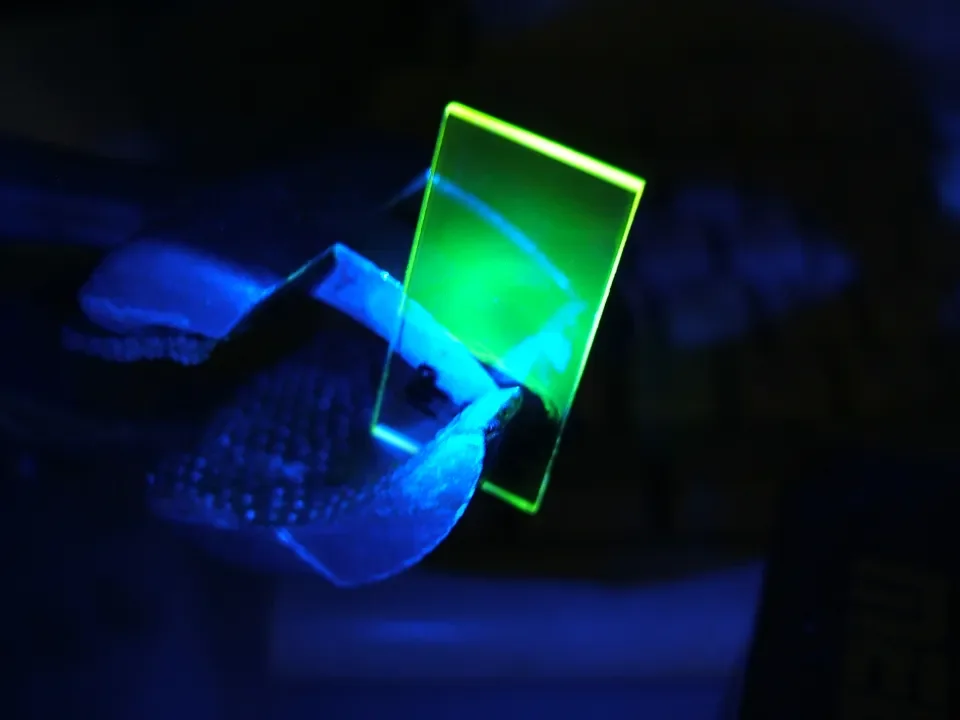
pH sensitive material in sol-gel film
The Sol-Gels for Sensors project is a great example of a multidisciplinary team of scientists - whether chemists, physicists or biologists - coming together to great effect. The project showed how the combination of Sol-Gel microporous coatings and evanescent wave coupling for optical-chemical detection could be used effectively in a broad range of important applications both in DCU and abroad. The key to all these breakthroughs across a range of contexts lay in the detection of very low concentrations of molecules - a key factor, for example, in the early detection of disease.
Professors Brian MacCraith - former President of DCU - and Professor Colette McDonagh from the School of Physical Sciences said the project and related research had a very positive impact on the scientific world.
“These ideas formed a key element of the case for, and proposal to, establish DCU as the National Centre for Sensor Research and contributed strongly to the University becoming a world leader in optical-chemical sensing and biosensing,” said Professor MacCraith.
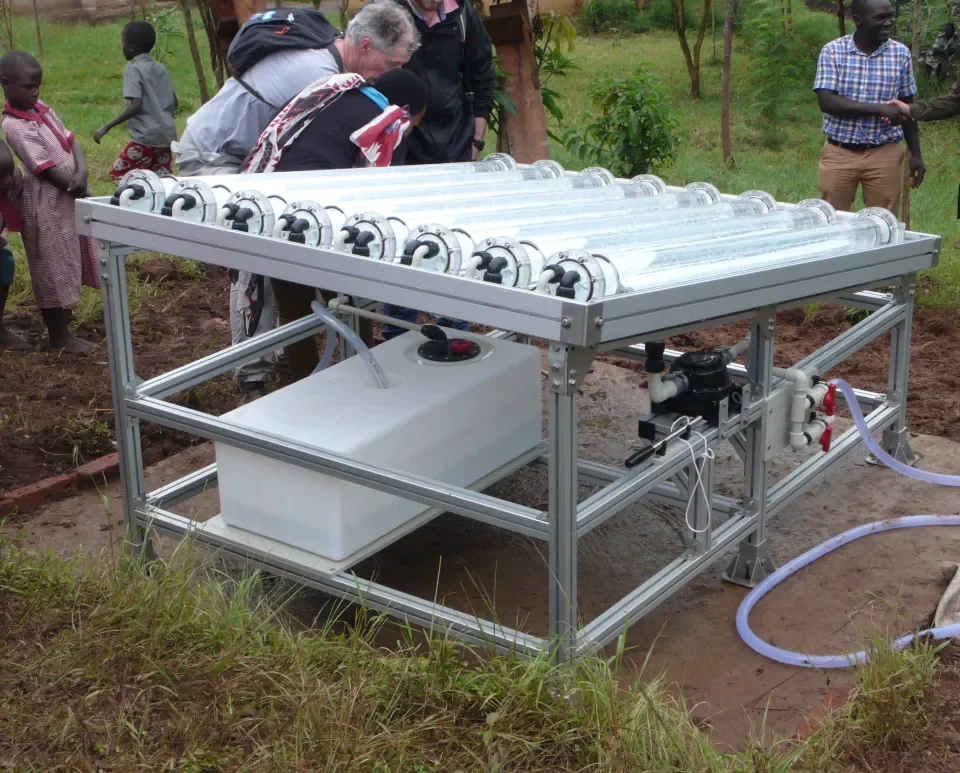
Waterspoutt Project
A four-year project that started in 2016, Waterspoutt had one main objective: to deliver safe drinking water to remote and vulnerable communities throughout Sub-Saharan Africa and other resource-poor countries. They did this through a large collaborative research project funded by the Horizon 2020 programme. The aim was to provide a range of large volume sustainable solar disinfection (SODIS) technologies that would enable the process. Dr. Brid Quilty and Dr. Rosaleen Devery represented DCU in the multidisciplinary consortium where their role was to evaluate the drinking water produced by the SODIS reactors for toxicity.
“Such a study had never previously been undertaken and the work of DCU proved that the reactors were safe to use thus ensuring an affordable and sustainable method for providing safe drinking water to communities in developing countries,” said Dr. Quilty. “This was a very big and important project and it has helped to make a worldwide difference.”
The healing power of seaweed came to the fore in this piece of research which discovered a molecule in the marine algae that offers relief for eczema sufferers. The itch of atopic dermatitis - also known as eczema - is a common problem, particularly in young children and babies. It is also an issue for many animals, including horses and dogs. While steroid creams can relieve the itch, long-term use of topical steroids can thin the skin, which is why Professor Christine Loscher’s discovery was so important. Professor Loscher, from the DCU School of Biotechnology and Associate Dean of Research at the university, found seaweed can be a big boost for the human immune system.
“The sea is teeming with all sorts of life, and those diverse life forms produce chemicals and compounds that may be able to affect our immune systems,” she said. “We found a compound of interest and we worked with chemists in University College Dublin to figure out what was going on. It turns out that this compound from seaweed blocks a key switch in our immune systems called Mal. This stops the kind of inflammatory response that triggers a flare-up of dermatitis, but it doesn’t stop other important functions of the immune system.”
Students of the BSc in Genetics and Cell Biology will be familiar with an annual accolade called the Michael O’Connell Memorial Medal. Awarded to the highest- ranking final year student in the degree programme, it is named after the late Dr. Michael O’Connell, the man behind this research which focused on the bacterial uptake of iron. The acquisition and regulation of iron are essential processes governing host-bacterial interactions. Using models of a symbiotic nitrogen-fixing interaction between Rhizobia and plants to understand the mechanisms mediating iron utilisation in bacteria, the project discovered mechanisms key to informing additional studies.
Dr. Ciarán Fagan, said his late colleague and the research team shone a light on a new sub-family of transporters.
“This work led the way to the discovery and characterisation of a new sub-family of bacterial siderophore transporters in the Major Facilitator Superfamily and also to the characterisation of systems in the ABC Transporter Superfamily. Since these discoveries, other research groups have followed with the discovery of non-classical transport systems in human pathogens.”
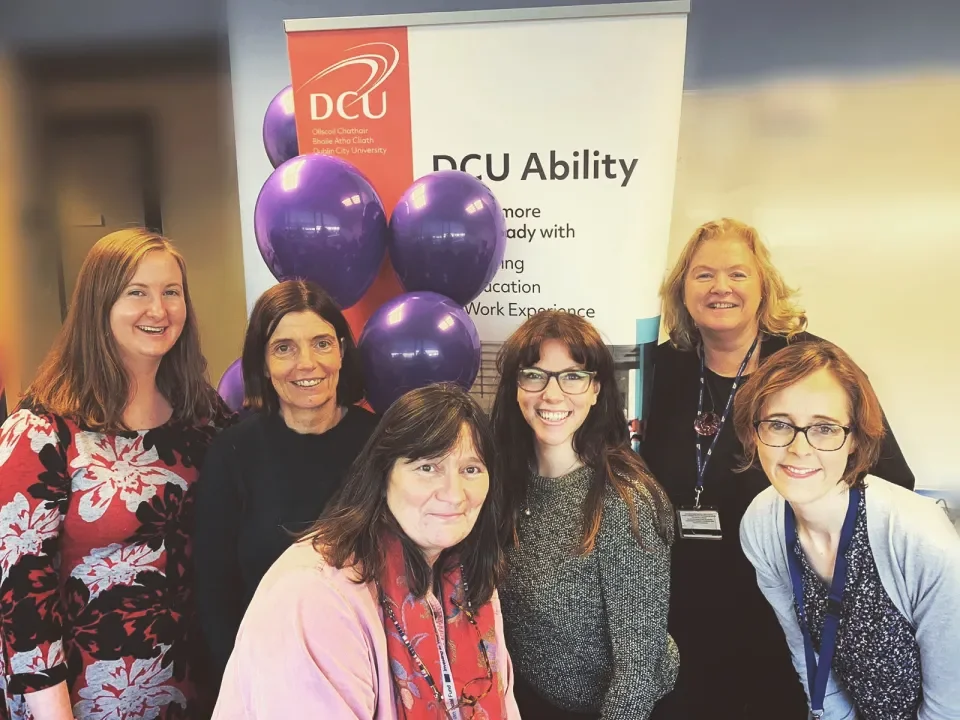
Ability Team
The DCU Ability Project was the first of its kind in DCU developed to engage young people with disabilities in a programme that aims to move them closer to employment. The sentiment is one of inclusion and holistic thinking, where participants can achieve their career goals, explore mainstream employment opportunities and grow in confidence. Essentially the project which is co-financed by the Irish Government and the European Social Fund as part of the ESF Programme for Employability, Inclusion and Learning (2012-2020), is all about work.
“People with disabilities find it very difficult to gain employment and often do not even see it as an option for them,” explained Dr. Deirdre Corby. “DCU Ability is about changing this perception both for the students with disabilities who take the programme but also for the DCU community who can become involved in providing work placements and experiences for the students. None of this work was possible without our partner St Michael’s House and our on-campus support in DCU.”
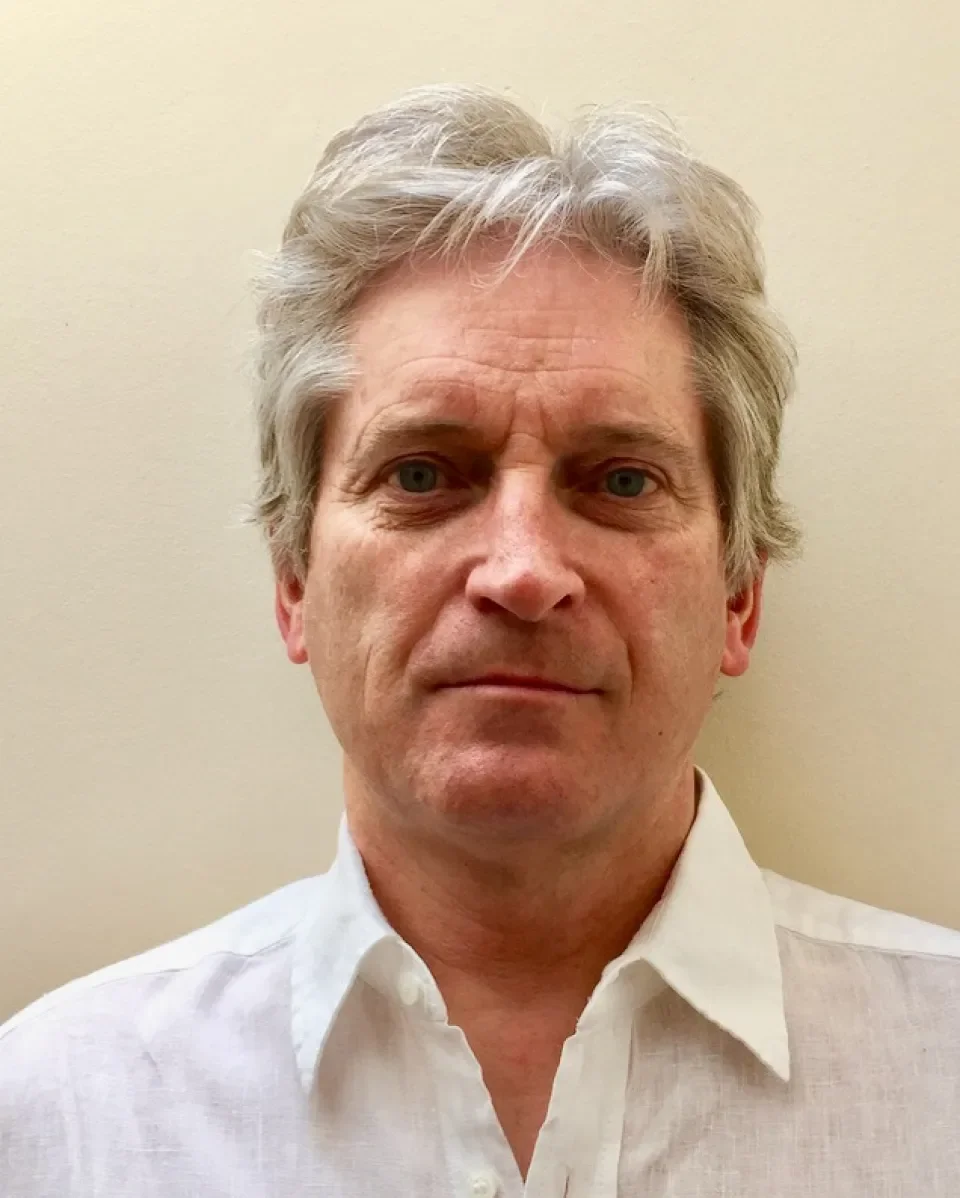
Professor Dermot Diamond
There are myriad scientific words that can seem complicated at first glance. The term ‘calixarene’ is one of these, but it comes from the Greek word ‘calix’, which means ‘chalice’, because these molecules have a cup, stem and base, just like a chalice. The science behind this project led to the first paper published in 1986 from a conference at NIHE Dublin (now DCU), on using calixarenes for making ion-sensors, and this discovery is now in widespread use. The sodium concentration in millions of blood samples every year, all around the world, is determined using this same calixarene sensor.
Professor Dermot Diamond said the ‘magic moment’ happened when his mentor and PhD supervisor at QUB, Dr. Gyula Svehla, arranged for him to test some new ion-receptors that had been synthesised by Tony McKervey, the then Professor of Organic Chemistry at UCC to make Super Glue stable.
“My supervisor saw how the calixarene structure and behaviour in superglue would make it a really effective ion-sensor. I tried it, and it worked beautifully, and, one might say, the rest is history.”
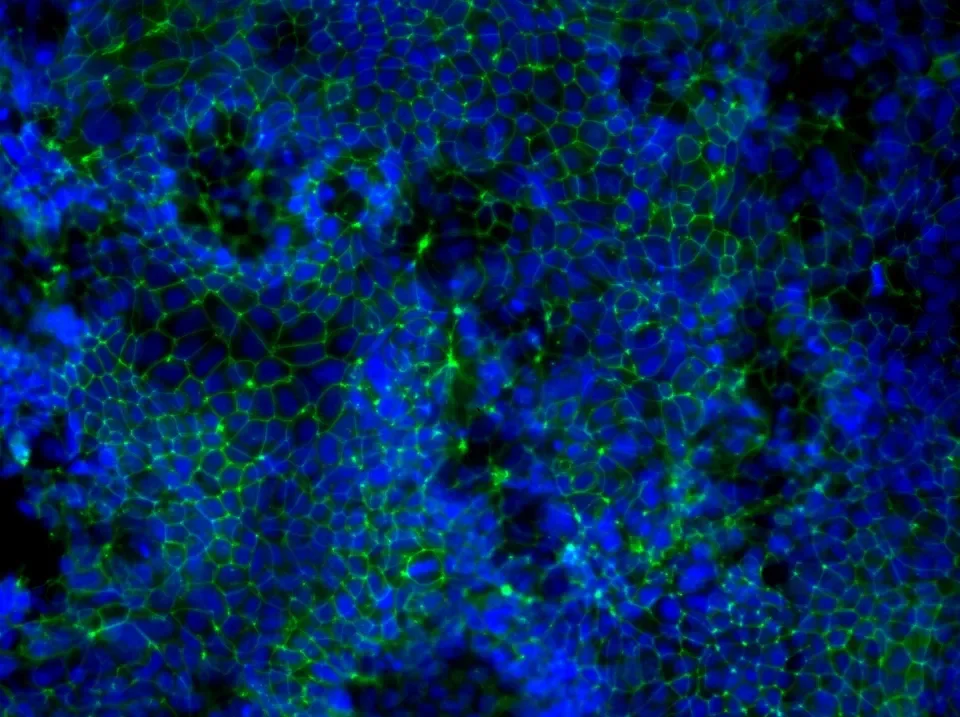
Immunofluorescent images of cornea epithelial cells
This project is one where the stars aligned to culminate in the first clinical application of cultured human adult limbal stem cells for the treatment of corneal disease in Ireland. Clinicians from the Royal Victoria Eye and Ear Hospital in Dublin and the NICB, collaborated to see the piece of research through from lab tests to clinical trials and finally, a trusted technique to help patients. Damage to the stem cell population of the cornea epithelia results in them being unable to maintain a stable cornea surface but this project discovered a way to regenerate the cornea surface.
Dr. Finbar O’Sullivan said the project involved a huge amount of work and a collaborative effort from all involved.
“On the 7th of June 2016, the very first cornea-limbal stem cell transplant in Ireland was conducted at the Royal Victoria Eye and Ear Hospital, and this has been used successfully for more than 10 patients since.”

Dr Paula Meleady
Chinese Hamster Ovary cells, or CHO cells, are widely used to produce complex drugs. However, cell-based production systems can be very expensive, which is why a team at DCU set about learning more about these cells and how to drive down costs in the production process. This is where proteomics comes in. As a large-scale study of proteins, vital parts of living organisms, with many functions, the proteome is the entire set of proteins that is produced or modified by an organism or system. To study proteins in CHO cells could have a substantial impact on how they could be produced. Which is exactly what NICB did.
“Our group at NICB have contributed significantly to the field of proteomic analysis applied to understand the biology of recombinant CHO cells to try to identify protein engineering targets that can be genetically modified in CHO cells to improve bioprocess phenotypes such as productivity, growth and product quality,” said Dr. Paula Meleady, an award-winning scientist. “We were the first in-field to apply advanced mass spectrometry based proteomics to carry out global phosphoproteomic profiling to characterise signalling pathways in CHO cells.”
Reaching out to a cohort of students is usually a relatively easy one with support systems in place and a network already established by previous educational institutions. But what happens if you want to take such a support system and make it even bigger? This is exactly what Dr .Eabhnat Ní Fhloinn, from DCU’s School of Mathematics, did when she embarked as a joint author on a national report in mathematics support. With three colleagues from Maynooth University, University of Limerick, and the Institute of Technology, Ní Fhloinn and her peers produced the first large-scale national survey of mathematics support in Ireland. The project drew responses from 1,600 first-year students across nine higher education institutions and the national survey incorporated students who had and hadn’t used the service before, allowing them to collate insights in both cohorts.
“As authors, we were invited to present our findings to an Oireachtas Joint Committee in October 2015 and subsequently made recommendations to Government about the provision of mathematics support in higher education,” said Ní Fhloinn.
When a core group of academics from the Faculty of Science and Health came together in 2000 with the aim of supporting the development of STEM learners, the Centre for the Advancement of STEM Teaching Learning (CASTeL), was born. Two decades later and the centre continues to make strides in the field of STEM education research, policy and practice on a national and global stage. The Centre has continued to established its leadership in STEM Education beginning with the awarding of European Framework Seven funding to coordinate two pan-European Projects focussed on helping support teachers in adopting inquiry-based science education (IBSE) at second level, ESTABLISH (2010-2014) and SAILS (2012-2015).
Dr. Eilish McLoughlin and Dr. Odilla Finlayson who led these pan-European projects, said:
“The impact of these projects was to prepare 5000 science teachers across Europe, not only to be able to teach through IBSE, but also to be confident and competent in the assessment of their students.”
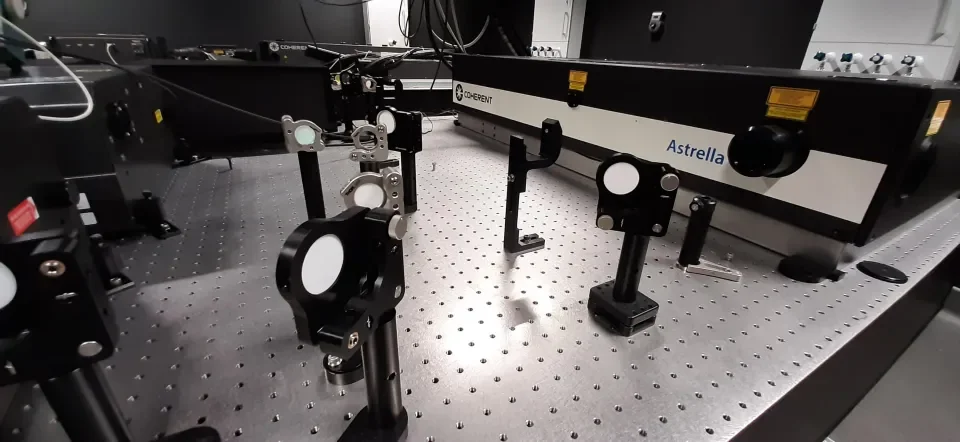
Laser Mirrors
To explain the growth and optical properties of zinc oxide (ZnO) nanoparticles is no easy feat, but that is exactly what a team of researchers succeeded in doing in 2005. The paper collating the findings packed quite a punch in terms of impacting the scientific community. Why? Because their work reported the growth of tiny objects called nanostructures of zinc oxide, a strong candidate material for next generation laser diodes and LEDs. The tiny size of the nanostructures offers the prospect of extremely efficient light emission for device applications.
“Our studies showed that the large surface to volume ratio (which is intrinsic to such nanostructures) detrimentally affects the optical properties of the system, especially at room temperature (the temperature at which actual devices operate),” said Professor Enda McGlynn. “These nanostructures offer the prospect of extremely efficient light emission devices, but our work showed that control of surface effects is crucial to realize devices at room temperature. This insight and its close relationship to applications has led to a strong citation record for this paper.”
DCU’s School of Health and Human Performance (SHHP), has been breaking the mould since its inception in 1999. It not only established the first BSc in Athletic Therapy and Training in Europe in 2005, but it also identified the need to provide undergraduate students with early specialisation in the assessment, treatment and rehabilitation of musculoskeletal injuries across the board, from elite athletes to the physically underactive. Graduates have the opportunity to study, work and travel abroad, while here in Ireland, the SHHP continues to gain recognition for this innovative therapy and training.
“The SHHP is the driving force of the development of this new profession in Ireland and has been at the forefront of its progression globally,” said Dr. and Programme Chair, Enda Whyte. “The programme and staff are now a centre for national and international based research in the area of injury prevention and rehabilitation, for injuries related to specific sports and general physical activity.”
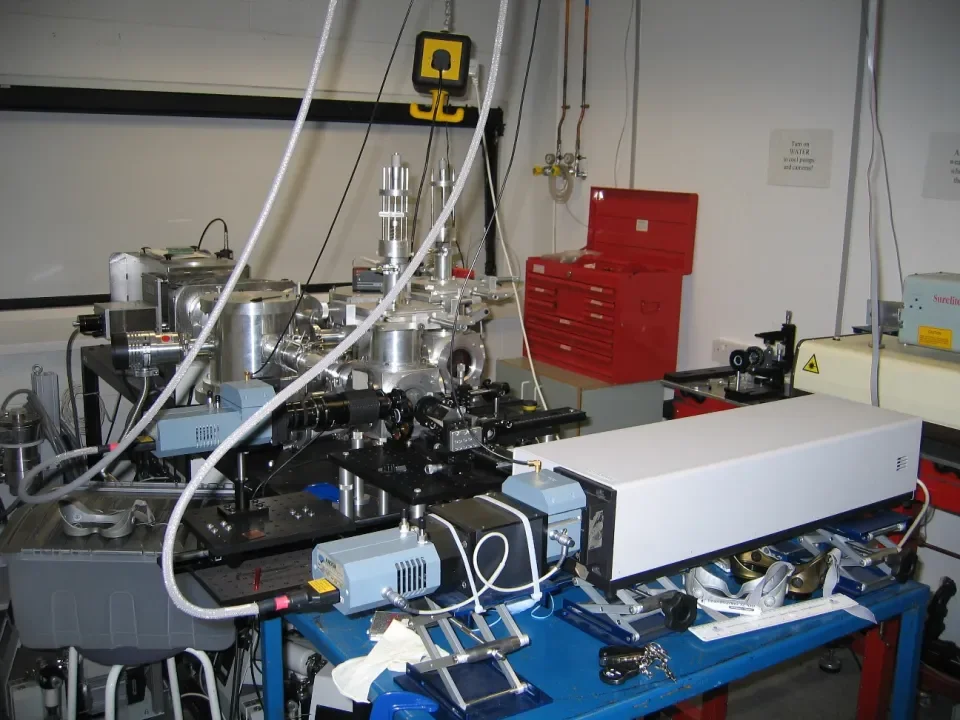
Instrumentation involved in the Hollow Lithium Experiments
To be at the forefront of discoveries, you need the right equipment, and for Professor Eugene Kennedy and his colleagues it was an expensive piece of equipment from Germany, combined with success in winning European Research Network funding, that enabled a world-wide unique Dual Laser Plasma facility at DCU. This led to many pioneering experiments including the first observation of a single-photon triple-electron excitation in atomic lithium - termed a ‘hollow’ atom.
“Hollow lithium in particular proved a great success and demonstrated the capacity of the system,” said Professor Kennedy. “This was PhD student Laurence Kiernan’s project. The Hollow Lithium paper stimulated an intense series of further experiments at storage ring facilities in France, Germany, Japan and the US. Many parallel theoretical studies across the world were also initiated, establishing hollow lithium as a seminal area of research. Under the leadership of Professor John Costello, DCU has continued to excel in laser plasma physics and to contribute to worldwide developments at short wavelength Free Electron Facilities. Under the leadership of Dr. Jean-Paul Mosnier, DCU has in recent years expanded its photoionisation studies from atomic to molecular ions. All of these developments were built on the early successes in the late eighties and early nineties – a crucial time for establishing DCU’s reputation for internationally leading research.”
It can be difficult to communicate research in mathematics given the complexity and importance of the subject matter. But Professor Eugene O’Riordan somehow manages to demystify the ‘thin layer phenomena’ by bringing its relevance into everyday life. Within several branches of engineering and science, thin layers are an important feature where the characteristics of some quantity of interest can change rapidly. For example, the accurate prediction of the velocity profile of airflow around an aircraft is crucial in determining drag and heat transfer during high-speed flight.
“The seed for the research area I have been involved in over the last 40 years, comes from a very short conference paper from 1905 (the presentation was only for 10 minutes),” said Professor O’Riordan. “Moreover, this result is connected to the celebrated Navier-Stokes equations dating from about 1845, which govern all kinds of fluid flow. Note that Stokes came from Skreen in Sligo. I suppose my research has been trying to make progress in an area that is strongly related to generating accurate approximations to the solutions of the Navier-Stokes equations.”
There is little doubt of the positive impact project DCU Water Institute (WI) has had addressing national, international, and global water resource problems. The WI is a cross-faculty initiative of research and education on water with three main goals that include: safe, secure drinking water; healthy aquatic ecosystems; and reliable, energy efficient, and quality water supplies for a sustainable economy.
Professor Fiona Regan said that through research and enabling talent, the WI develops solutions to national and global problems in water.
“Our vision is to provide informed leadership decisions and sustainable action, using advanced technology and data analytics in a multidisciplinary dynamic research environment. We achieve our vision through collaboration between WI members, government, industry, partner academics and agencies, identifying opportunities for knowledge transfer.”
Beginning with a summer research secondment to Intel Ireland in Leixlip, Co Kildare in 2001, Professor Greg Hughes nurtured the relationship into a mutually beneficial research platform that continues to flourish two decades later. With his colleague, Dr. Rob O’Connor, and other members of the School of Physical Science, Professor Hughes continues to work with Intel on a number of multi-year projects that have attracted well over €2 million in research funding to DCU. And more recently, the team helped to secure an SFI Infrastructure Aware, again with a value in excess of €2 million.
“The research projects have examined growth, characterisation, and reliability of novel materials for front-end transistor design resulting in high impact publications,” said Professor Hughes. “In total, this work has produced more than 100 peer-reviewed journal articles based on using traditional surface science techniques to address industrial design problems.”
What’s in a word? Well, quite a lot as it happens, especially if that word is ‘metallopolymer’. Polymers are materials made of long, repeating chains of molecules and in this instance the plastics contain metal atoms that give them exciting new properties - they can conduct electricity, catalyse the oxidation and reduction of environmental pollutants, create plastic molecular electronic devices and enable electron transfer to biomolecules. Professors Han Vos and Robert Forster carried out seminal work in this area which culminated in some of the first multi-functional, conducting metallopolymers ever reported.
“This work led the field because conductive metallopolymers became crucially important to ‘wire, redox active enzymes allowing new, high-performance electrochemical sensors to be created,” said Professor Vos. “Most notably, they formed part of the original investigations on glucose oxidase (GOX), for studying electrochemical glucose sensors for diabetes management.”
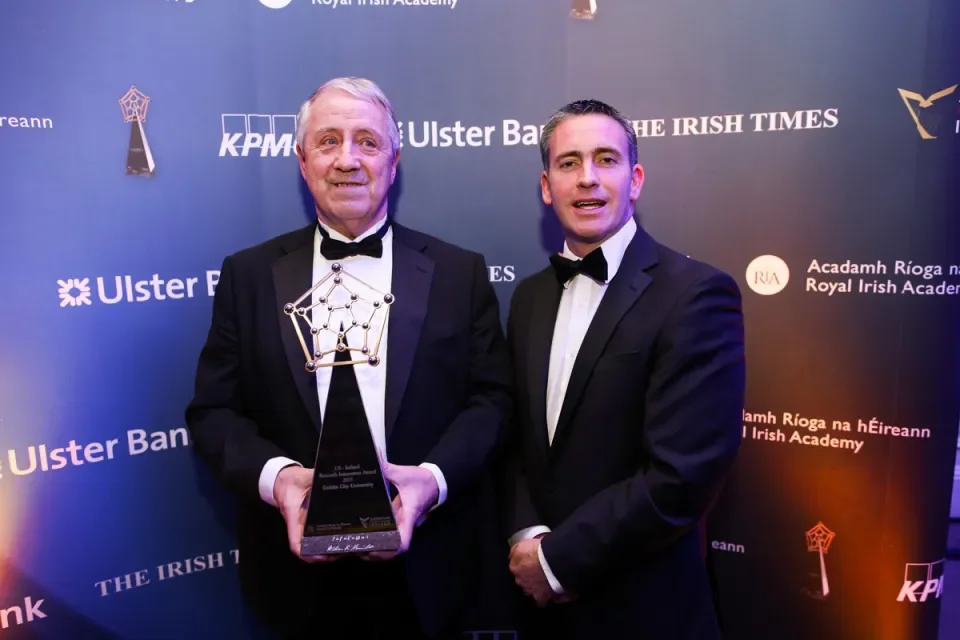
Professor Oliver Dolly
In-depth knowledge of communication in the nervous system, gained from extensive basic research by ICNT during three continuous rounds of 5-year funding from SFI, has been utilised to meet an ambition held when it was established at DCU. This involves the production of a new and much-needed drug in Ireland with capability to effectively treat chronic pain without adverse effects.
Nerve damage causes neuropathic pain and leads to the release of peptide transmitters from pain-sensing neurons, plus other mediators that induce peripheral hyper-sensitisation. It was observed that the resultant inflammation enhances trafficking to the surface of sensory nerves of particular cation channels that transduce signals culminating in the perception of symptoms. The key to success was discovering that a protein called SNAP-25 is essential for both the increased transmitter release and elevated surface content of transducers.
This advance arose from inactivating SNAP-25 with a very specific protease from type E botulinum neurotoxin (BoNT/E) that had been attached by protein engineering to BoNT/A. One injection of a tiny and safe dose of this hybrid relieved nocifensive symptoms in rodent models of neuropathic pain for up to 2 weeks, work supported by Enterprise Ireland. Following the granting of patents worldwide in record time for this unique protein, a multi-national pharmaceutical partner funded its extensive evaluation in several pain models. Subject to confirmation of the analgesic properties, contract terms are agreed with ICNT/INVENT/DCU for commercialisation including significant milestones and royalties conditional upon satisfactory clinical outcomes. For separate research, Professor J Oliver Dolly won the 2015 inaugural US-Ireland Research Innovation Award from the American Chamber of Commerce in Ireland and the Royal Irish Academy.
With the highly dynamic emergence of life science technologies in the 21st century, a new generation of tools is needed to implement new findings for the benefit of societies, citizens and their economies. One such tool is the centrifugal microfluidic “Lab-on-a-Disc” platform developed in DCU to measure a broad range of parameters from biosamples such as blood and food at the point of use.
Professor Jens Ducrée said the idea behind the technology is to provide big picture information that has manifold benefits, from a scientific, workflow and patient perspective.
“This project spans more than 10 years involving an interdisciplinary consortium with researchers from many different scientific disciplines. Typical applications of these next generation sample-to-answer systems are biomedical point of care and global diagnostics, process analytical techniques for biopharma, as well as monitoring the environment, infrastructure, industrial processes and agrifood.”
Mathematics is inherently linked to the physical world. We cannot think of either in isolation with many important real-world systems - think physics, biology and finance - subjected to random stimulus. They can also react to their environment with a delay, or with a memory of their past. The mathematical objects that can be used to model these phenomena are called (stochastic) functional differential equations, or SDEs, which have been the subject of a 15-year study under the watchful eye of Professor John Appleby and his team. During this time, the work, supported by over €1 million in funding, has resulted in around 100 publications, and 11 PhD graduates.
“Our group has studied many aspects of the long-time behaviour of these equations,” said Professor Appleby. “These include the effect of noise on the stability of systems with delay, establishing for the first time that noisy input can have a stabilising effect. DCU has achieved national leadership in Financial Mathematics research.”

MTCI concept logo
For the last three decades, critical work has been ongoing in the Faculty of Science and Health into the area of cancer research. One of the leaders in this area, Professor John Crown, a medical oncologist based in St Vincent’s University Hospital, has collaborated with DCU since the late 1990s and his work has resulted in successful clinical trials, recognition and awards. In 2009, the team led out Molecular Therapeutics for Cancer Ireland (MTCI), the first collaborative cancer research centre in Ireland. Funded by a Science Foundation Ireland Strategic Research Cluster (SRC), MTCI was a focussed partnership of industry, science and medicine utilising translational research and early-stage clinical trials to individualise targeted therapy treatments for breast and prostate cancer patients.
“Over the course of five years, MTCI secured €1.4m funding from industry collaborators and produced 60 journal publications, 18 reviews, more than 200 international and national presentations and hosted over 50 workshops/conferences,” said Professor Crown. “DCU acted as lead translational research site on each of these studies.”
Supporting people with dementia and helping them to stay in their homes, was one of the aims of the Dementia Skills Elevator. The programme focused on ability rather than disability and gives people the skills they need to support people with dementia. One of the critical aspects of the project was to challenge the way people think about dementia and provide opportunities for people who work with people with dementia to move up to the next level of education and skill. The team is led by Professor Kate Irving of the School of Nursing and Human Sciences, Dublin City University.
“The project developed a range of research-based training programmes and other resources which help people learn more about supporting people with dementia,” said Professor Irving, who has been involved in clinical practice, teaching and research in the dementia field for over 15 years. “The main motivation behind Dementia Elevator was to achieve ageing in place for people with dementia, by ensuring that there are people with the right skills to make staying at home a more obvious choice.”

PATHway Software
Empowering people goes far beyond motivational talks and solid advice. It’s about equipping people with the right tools to make a positive change in their lives, like the PATHway project. The PATHway system, under the direction of Professor Kieran Moran, coordinated an international consortium of 32 leading exercise, behavioural and data scientists, clinicians, and technologists, to successfully deliver the first Connect Health system for fully integrated cardiac rehabilitation. It was truly unique in its delivery of a personalised exercise and lifestyle programme via a ‘virtual coach’, allowing people to exercise on their own time and in their own home.
“This was really significant because there can be a real challenge for people who live around the country to attend community-based exercise programmes during their rehabilitation,” said Professor Moran. “The advantage of having PATHway is that you can choose when you’re going to exercise rather than having to try and work to a time that might not suit. You can also exercise with others virtually and this allows friendships and peer support to grow.”
The Recovery College is a key part of mental health services in Ireland. Established in 2016, the Recovery College in Dublin North, North East plays a significant role in helping those requiring mental health assistance. According to the team, this is carried out by providing an emancipatory educational intervention into the communities of North Dublin, Louth and Meath. The purpose of the intervention is really quite simple and effective: to provide a holistic type of treatment that focuses on empowerment and connects family members with their loved ones who are addressing mental health problems.
Dr. Liam Mac Gabhann, the Steering Group Chair, said:
“At a time when it is a challenge to determine what beneficial outcomes are occurring in mental health services, the Dublin North, North East Recovery is significantly enhancing people’s personal and social recovery in the communities it serves.”
It was while he was on sabbatical in the early 1990s, that Professor Malcolm Smyth made a key finding where he incorporated antibodies into conducting polymer materials for the first time. A conducting polymer is an organic polymer material that conducts electricity and has found important applications in sensors, soft actuators and artificial muscles. An antibody is a protein that can act as the bio-recognition element in sensors. The project on combining these materials was in collaboration with Professor Wallace in Wollongong, Australia. While visiting Prof Wallace’s laboratory, Professor Smyth enabled one of the first bio-molecular experiments with antibodies and conducting polymers.
“This led to the discovery that the incorporation of these antibodies into conducting polymers could effectively interact with their corresponding antigen and penetrate an electronic signal,” said Professor Smyth. “This work paved the way for important research.”
Undoubtedly, 2020 and the global pandemic has refocused our appreciation for frontline health workers. Nevertheless, certain cohorts of the sector are frequently under pressure to perform against a backdrop of salary drops and health spending cuts. Step forward the RN4CAST project, a study undertaken between 2009 and 2011, and the largest ever conducted into the nurse workforce. Funded by the European Union, the overall project was led by Professors in Ireland, Belgium and America.
“We looked at how organizational features of hospital care impact on nurse recruitment, nurse retention and patient outcomes,” said Dr. Marcia Kirwan. “The results clearly indicate the importance of nurse staffing levels to patient outcomes in acute hospitals. They demonstrate that patient outcomes -including mortality levels, adverse event occurrence and length of stay - are impacted by nurse numbers, but also by other nurse factors such as education levels, job satisfaction and rates of nurse burnout. Significantly the environment in which nurses practice is influential in determining both patient and nurse outcomes, including the intention to leave both their current job and in some cases the profession.”
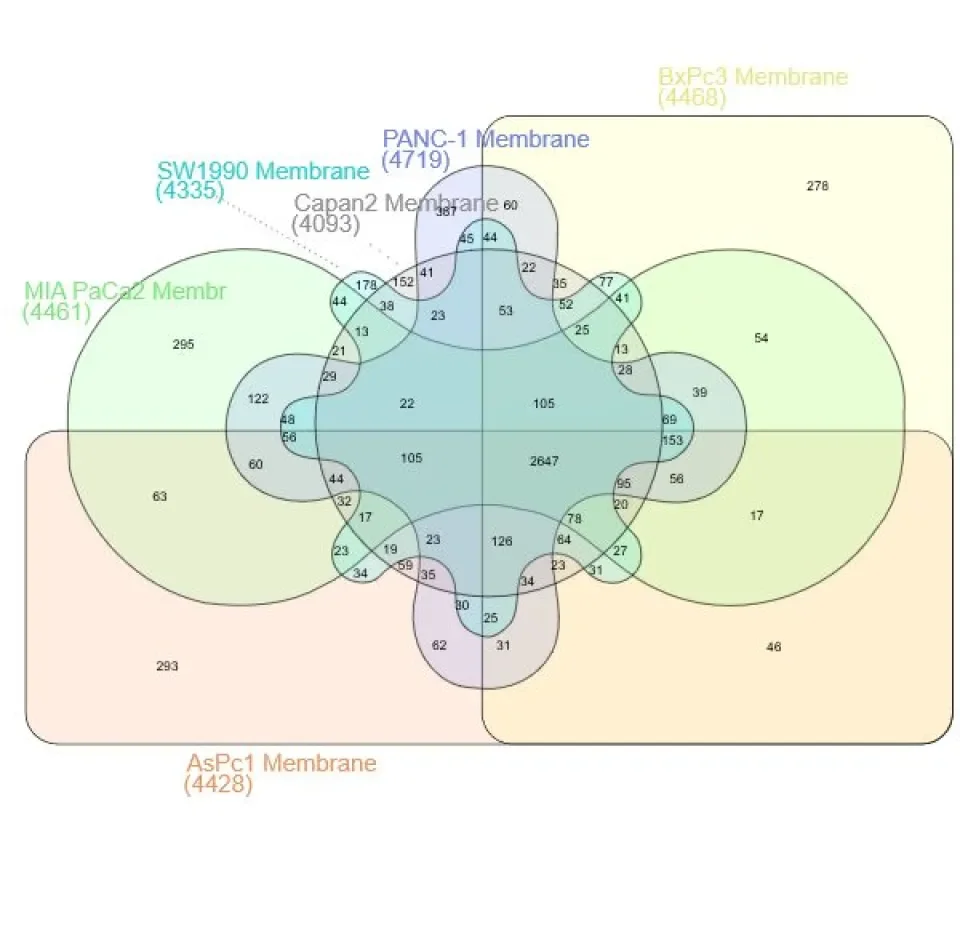
Pancreatic Cancer Proteomics
Pancreatic cancer is diagnosed in 550 people in Ireland each year. One of the problems with this lethal killer is the lack of early symptoms or warning signs to flag the formation of a tumour. With this in mind, a team at the National Institute of Cellular Biotechnology (NICB), set about finding a better understanding of the illness. Funding was obtained from Science Foundation Ireland (SFI), St Luke’s Cancer Research Fund and Pancreatic Cancer UK, to research the cancer at molecular levels with the results allowing for a better understanding of this very lethal disease.
“Pancreatic cancer is a major killer and one that there isn’t a great treatment for because by the time you find out you have it, the disease is already quite well advanced,” said Professor Martin Clynes. “NICB, in collaboration with clinicians at Saint Vincent’s University Hospital and Saint Luke’s Hospital, made a major strategic decision to focus many of its areas of expertise to gain a better understanding of pancreatic cancer.”
In today’s society, we hear of more and more efforts underway to help children with autism. Our schools, supermarkets and cinemas have taken steps to make their environments less stressful for sufferers. But 10 years ago, a team of researchers in DCU were already making discoveries of their own on the issue of autism. The Autism Research project was the first application of a successful method for estimating the prevalence of the disability. The project recruited over 500 primary school children and found that the autism prevalence in Ireland was around 1%.
A second study, led by Dr. Mary Rose Sweeney, laid the foundations for the recent designation of DCU as the first Autism Friendly University in the world.
“As part of this work, the research team conducted an all-campus scoping exercise examining potential sensory irritants for students with autism, qualitative interviews with staff across all departments in the university and an online anonymous survey with students with autism,” said Dr. Sweeney. “The project has already been translated to other Higher Education Institutes (HEIs) and settings outside of academics such as hospitals and technology companies.”
To collectively trailblaze is no easy feat especially when you are dealing with matters of the universe, but several schools in DCU have managed to do just that with incredible research efforts into everything from astrophysical phenomena to mathematical understanding of black holes. The development of these new areas of research in DCU are the work of research teams led by Dr. Brien Nolan, Dr. Masha Chernyakova and Professor Turlough Downes.
"During this millennium the research areas of astrophysics and relativity have been built into internationally significant activities of DCU, with discoveries in black hole physics, star formation and high energy astrophysics appearing in all the top international journals, including Nature and Physical Review Letters,” said Professor Downes. “New undergraduate and postgraduate programmes have been created, educating students in areas which are vital to both astrophysics and relativity, and that support Ireland's economy. We're looking forward to growing our education and research even more into the future."
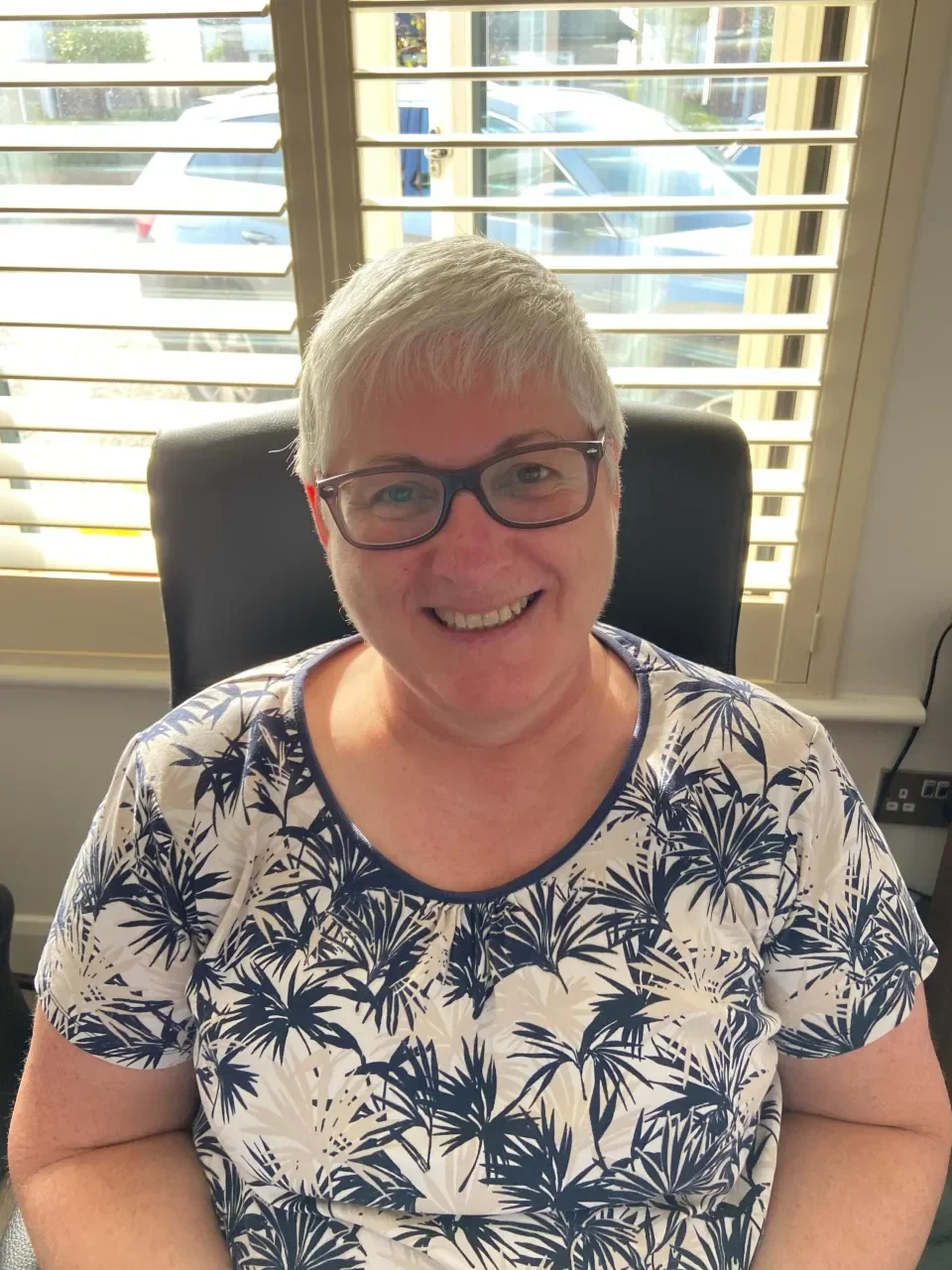
Dr. Mel Duffy
Building a culture of inclusion was the core aim of research undertaken by Dr. Vera Sheridan and Dr. Mel Duffy, when they set about giving a voice to the lesbian, gay and bisexual members of An Garda Síochána. This was the first study of its kind, and the Cultures of Diversity: Sexual Orientation in An Garda Síochána, is considered one of enormous significance in shaping a more inclusive culture within the police force.
“The intended impact of the study was to influence the LGB policies within the Gardaí enabling it to build a culture of inclusion among its members,” said Dr Duffy. “This was the beginning and the study has enabled the transformation of LGB lives within the workplace leading to things like the integration of LGB in PRIDE events and official garda cars transformed with PRIDE colours. What the study tells you is that it doesn’t matter who you are or what your sexuality is - we are all part of a community and that should be understood and celebrated.”
DCU achieved an important success in 1999 when three national research centres were established with funding from the Programme for Research in third level institutions. One of these was the National Centre for Plasma Science and Technology (NCPST). Reasons behind the setting up of the centre were numerous successful research projects already underway, like those of low-temperature plasma physics.
“In particular, a group of papers was widely published in the course of the 1990s that had a major international impact, not just on the wider academic community, but also locally in that these works paved the way for other major projects,” said Professor Miles Turner. “The centre’s projects have had a major impact on the DCU research community, the international academic community, and the world of industry and innovation. Moreover, many of these publications have provided classic, and are cited as often today as when they were first published.”
Med Ex - Medical Exercise and Wellness - was established in 2006 as a collaboration between the School of Health and Human Performance and DCU Sport. It was the most substantial community engagement activity undertaken by the school and offered a range of community based chronic illness rehabilitation programmes with a core focus on medically designed and supervised physical activity classes. Each week, over 700 patients availed of the programme which included over 20 classes to help people.
“It is thought to be the largest community based chronic illness rehabilitation programme in Europe,” said Professor Niall Moyna. “The programme has not only extended participants' lives and improved the quality of their lives, but it has also led to significant research publications to facilitate the development of similar programmes nationally and internationally.”
The mission of the DCU ICNP group is to advance nursing informatics research through STEM, and empower nurses in the role of eHealth. The team established an interdisciplinary centre for eIntegrated Care (CEIC), in 2018 while International Classification for Nursing Practice (ICNP), is taught to undergraduate students and postgraduates in the school’s nursing programmes.
“New models of care delivery underpinned by regulation and standards will accelerate access to information across and between care providers and service users,” said, Dr. Pamela Hussey. “In the year of the nurse it is important to reflect on the profession’s contribution particularly when it comes to designing systems to minimise risk and optimise safety and efficiency. Nurses are not solely there to replace the missing physician; chronic disease management is core nursing territory and we are engaged in the Centre for eIntegrated Care in interdisciplinary award winning projects such as the Common Semantic Data Model to advance complex healthcare networks and provide the building blocks for service delivery platforms for the future.”
The Beacons project was a breakthrough in the study of sensors technology. The research originated from the pioneering work of the Applied Biochemistry Group, in the School of Biotechnology, led by Dr. Caroline Murphy and Professor Richard O’Kennedy. That work focused on antibody-based technologies which helped establish DCU as the national leader in this area. Indeed, the antibodies generated are to be commercialised and will in particular, help the fishing sector.
“The antibodies generated through this project can be used to detect marine toxins that cause major problems in the environment and in shellfish,” said Professor O’Kennedy. “These are issues that must regularly be addressed in Ireland, the USA and globally.”
Getting Ireland’s young people active is at the core of research undertaken in the Y-PATH project, a health-based physical education programme. Co-designed with students, teachers, and national agencies, to meet the curriculum needs of schools, it has become an important part of changing the landscape for physical education in Ireland. In the past two years, now under the management of the Irish Heart Foundation, just under half of post-primary schools (42%), have received the programme, which has an estimated reach of 150,000 young people, with another 90,000 participants anticipated in the coming years.
“This is the first national programme of its kind, with national agencies working together behind one initiative to support the rollout of a quality physical education programme in schools,” said Dr. Sarahjane Belton. “The work has transformed the way PE is taught in post-primary education in Ireland, and is directly impacting the health and wellbeing of school children nationally. This has an immediate and long-term significant economic and social benefit for the country.”
In mathematical analysis, asymptotic analysis, also known as asymptotics, is a method of describing limiting behaviour. In the late 1980s, there was an upsurge in this type of analysis, namely in exponentially-improved asymptotics. Professor Alastair Wood was among the pioneers developing techniques in this area. Central to these techniques was the concept of resurgence, which not only explains how small exponentials are responsible for the divergence of an asymptotic series, but also allows the divergent tails to be recorded.
“Professor Wood’s work with collaborators - many of them DCU colleagues and students - resulted in exponentially improved expansions in a range of settings,” said Dr. Sinéad Breen.
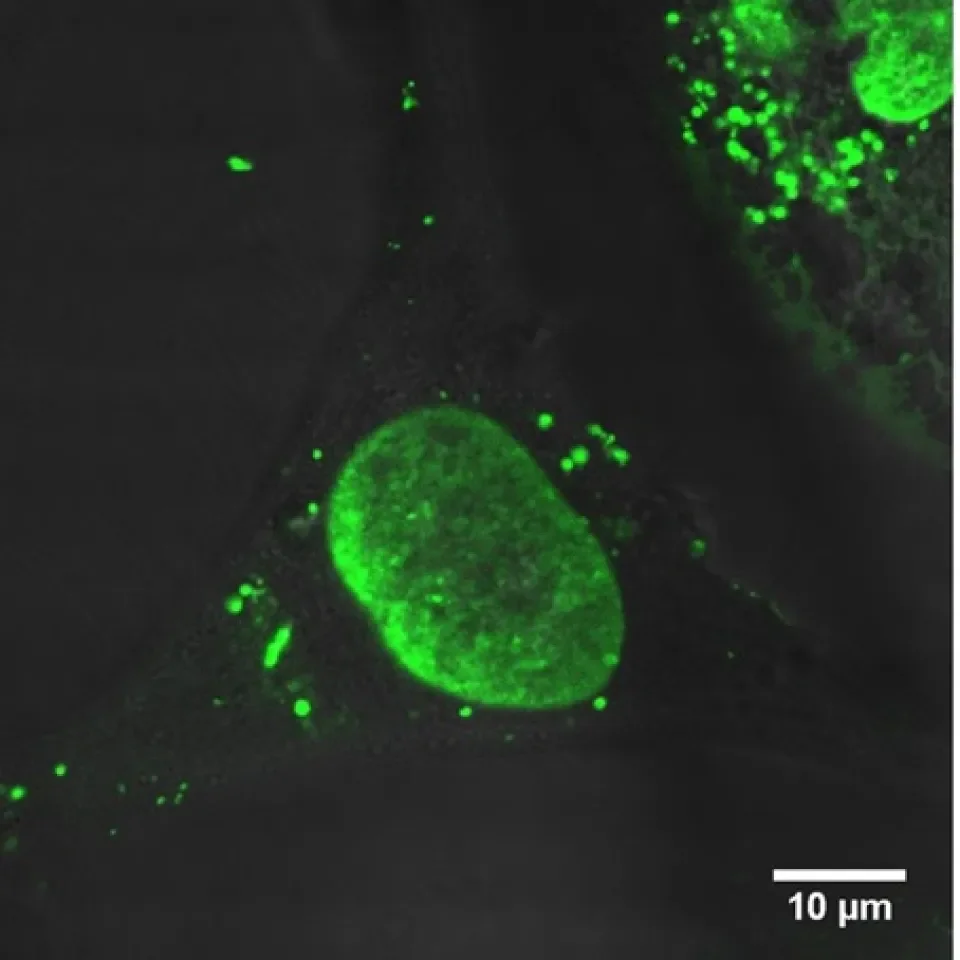
Live HeLa cells stained Ruthenium bioconjugate (green)
The School of Chemical Sciences is taking on new challenges each day, in an effort to discover even more about human cells. Take a programme led by Professor Tia Keyes over the past 12 years which has led to seminal contributions in the preparation and application of ruthenium bioconjugate probes to cell imaging and phototherapy. The research demonstrated that the nuclei of live human cells could be targeted and the DNA within imaged and photographed with single biomolecule precision.
Professor Keyes said:
“Overall, the work demonstrated has a powerful combination of imaging and photocytotoxicity and is an important step towards realising photo theranostic applications.”
Established in 2019, DCU’s new School of Psychology is a centre of excellence learning, research, and collaborations. The school has leaders in cancer survivorship research as well as recent projects that have developed theory- and evidence-based interventions to support people living meaningful lives. One of these projects focused on a self-management intervention to promote quality of life and improve participation in life activities in head and neck cancer survivors - a project funded by the Irish Cancer Society. Another important piece of research is examining the impact of COVID-19 on children with autism and their parents
